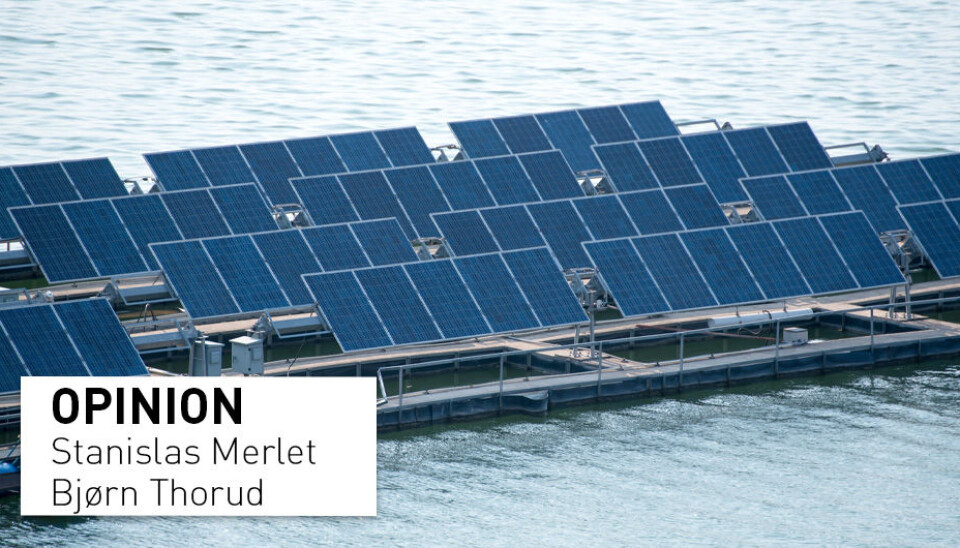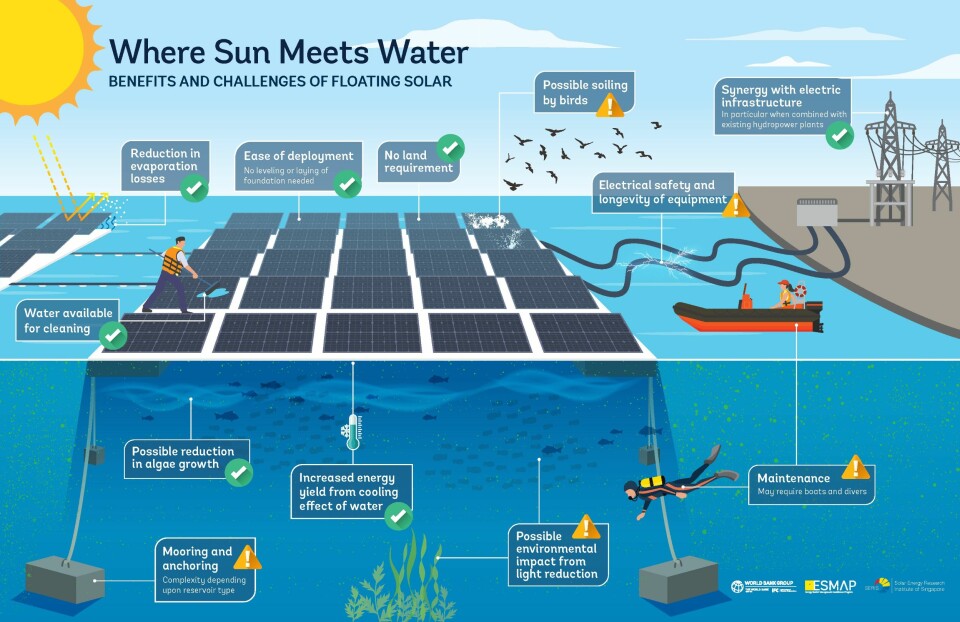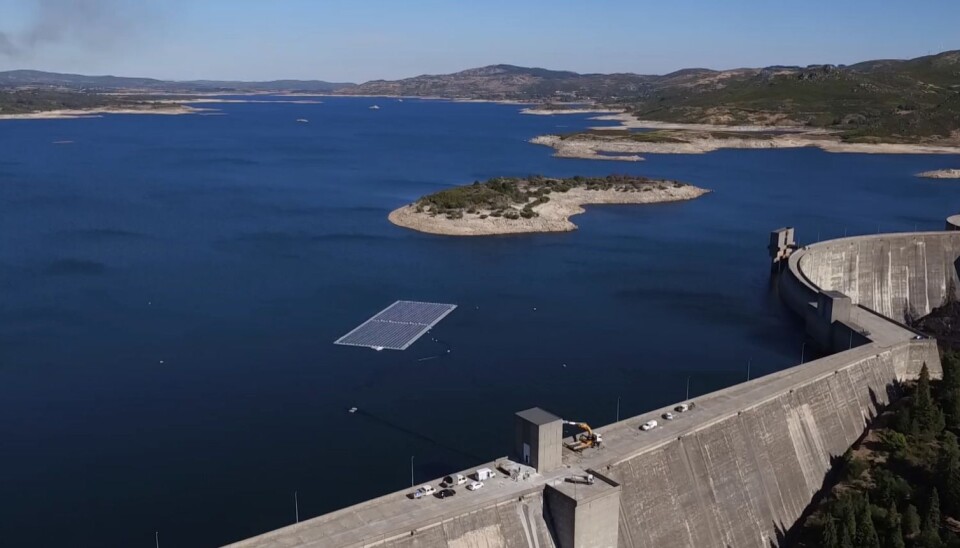Opinion:

Floating solar power connected to hydropower might be the future for renewable energy
OPINION: Hydropower plants need an upgrade. And we need to use more renewable energy sources. The solution? Floating solar power connected to existing hydropower plants.
Solar and wind power continue to dominate the renewable energy expansion, jointly accounting for more than 90 per cent of the new capacity installed in 2019.
Hydropower, however, still represents nearly half of the global renewable capacity already in operation. Hydropower harnesses the energy of falling or fast-running water, typically generated in dams. Most of it is large-scale and cost-competitive. It is flexible and easy to store – in contrast to so-called variable renewables like solar and wind.
While much light is often given to new developments of hydropower, with concerns expressed about environmental and social impacts of dams, there is also an increasing need to modernize and optimize the current assets. Infrastructure is aging, with nearly half of its global capacity older than 30 years and about one-third older than 40 years.
Modernization is not only about maintaining or increasing safety, performance and reliability to extend lifespan. It is also a great opportunity to adapt these old infrastructures to the future.
The future climate, firstly, with an unfortunate higher probability of more frequent droughts and flood events.
But also the future power systems. These will have higher needs for so-called dispatchable generation, i.e. plants that can adjust their power output on demand at the request of power grid operators, like opening the water tap. This flexibility will be necessary when a bigger share of the power will be coming from variable, non-dispatchable, renewable energy sources relying on the unreliable weather in order to generate power.
Enter: floating solar power
In this context, floating solar photovoltaics (FPV) is emerging as a complement to conventional solar power on buildings and ground-mounted and as an interesting solution for hydropower developers.
The concept is quite simple: using conventional solar panels installed on floating structures such as floats, pontoons or membranes, while the whole system is firmly anchored and connected to the electrical connection onshore. While still a niche, the industry is growing fast (at a rate of +122 per cent since 2015), becoming more mature and less costly every day.
The advantages of floating solar power are many:
i) it saves land surface, reducing land pressure on settlements or agricultural areas (locations with high levels of conflicting interests) and decreasing land acquisition costs;
ii) it is quite easy to deploy which limits site preparation and civil works;
iii) the solar panels installed on water benefit from a higher cooling effect, leading to lower temperature losses thus improving yields;
iv) covering water surfaces limit evaporation, saving more water for hydropower or irrigation uses; and
v) to a certain degree, covering water surfaces can also limit algae growth, thus improving water quality for fresh water supply.
Of course, developing floating solar power must also come with its share of caution, especially regarding environmental and social impacts, for instance for the aquatic fauna and flora, and fisheries. Extreme conditions could be a challenge and good anchoring and mooring is needed. The design must take into consideration wind, waves, water level variations, ice, floating objects, corrosion, UV, etc. Maintenance may also be more difficult than on land: equipment longevity on ever-moving floating structures needs to be monitored, electrical protection on water can be tricky, and access for personnel may not be so easy.

More electricity, more money
Historically, ground-mounted solar parks have been easier to develop on broad areas of flat land. Hydropower, in contrast, requires steeper terrain so that water can flow, making it in theory quite complicated for both energy sources to be located in the same spot.
Even so, floating solar power opens wide the possibility to deploy large-scale solar power close to existing hydropower projects. More energy, meaning more revenues, can be produced from the same location, sharing some of the existing assets like electrical infrastructure and existing transmission lines to evacuate the power.
In addition, hydropower operators are struggling with more and more stringent constraints: providing flexibility to power systems, but also coping with more demanding water management. Hydropower projects are often multi-purpose: managing drinking water, water supply to the industry, irrigation and recreational activities. Dealing with multiple stakeholders adds complexity, and conflicts can emerge in relation to the operation of the reservoir.
A hybrid power plant, operating simultaneously the solar and hydro parts, can answer to the challenges of both energy sources. Hydropower compensates for the unstable solar power production by its rapidly adjustable output, whereas solar power contributes to saving water on mid- to long-term scheduling, providing seasonal and daily flexibility. With an even more firm and dispatchable power output, the operator can then increase electricity sales and seek higher prices.
Collocation is fine, hybrid is best
The best hybrid example (which is not floating) is currently located in China: the Longyangxia power plant, in operation since 2014. Hybrid in this setting means that the hydropower and solar power are connected in the same system.
Since early phases of the project development, different research institutions have been investigating the project’s complementary operations, scheduling and optimization. Unfortunately, and despite evidence of the benefits provided by such hybrid plants, it appears that the industry has failed to repeat the implementation of projects of this type so far.
Most of the commercial projects on hydropower reservoirs currently in development are so-called collocated solutions. This means that, even if floating solar is implemented on the reservoir, both energy sources each have their own power purchase agreement, operating independently. The full potential of joint operations is not exploited. This is for example the case of the Norwegian consortium Statkraft / Ocean Sun and their pilot project in Albania, which got some media attention in recent years. Only a handful of small projects are currently planned with hybrid operations worldwide.

Water + sun = the way forward
The reasons for the slow development so far are directly linked to the intricacy of local and national regulations and policy frameworks, but also to the perceived technical complexity of hybrid operations.
In addition, solar power and hydropower plants have up until recently been developed, built and operated by very different industries. Floating solar power technology provides new occasions as solar companies are now looking for opportunities on water, driven by the need to identify large areas with low conflicting interests and short distance to the grid.
In this context, several interesting mergers & acquisitions news came out during the autumn 2020. Scatec Solar, developer and operator of solar power plants across emerging markets, announced the acquisition of SN Power, a hydropower developer currently owned by the Norwegian investment fund for developing countries, NORFUND. Also, Statkraft, the historic Norwegian hydropower producer, announced the strengthening of its solar power capacity by the acquisition of Solarcentury, a UK-based major solar actor in Europe. This trend to global multi-sources renewable energy actors consolidate the perspective of an upcoming development of hybrid projects.
The global potential is enormous. A study from Lappeenranta University of Technology stated that approximately 6,270 TWh of extra electricity could be produced per year from floating solar power on reservoirs worldwide (with only 25 per cent of surface coverage). This corresponds to approximately 40 times the annual electricity generation from hydropower in Norway.
Are hydro-connected floating solar power plants part of the answer to both the integration of more variable renewable energy and the modernization of old renewable assets? Most probably. It does not only provide additional capacity; it also adds flexibility allowing further integration of renewables. In simple words, the output of these hybrid plants is higher than the plain sum of both energy sources: one + one does not equal two, but three.
Share your science or have an opinion in the Researchers' zone
The ScienceNorway Researchers' zone consists of opinions, blogs and popular science pieces written by researchers and scientists from or based in Norway. Want to contribute? Send us an email!





























